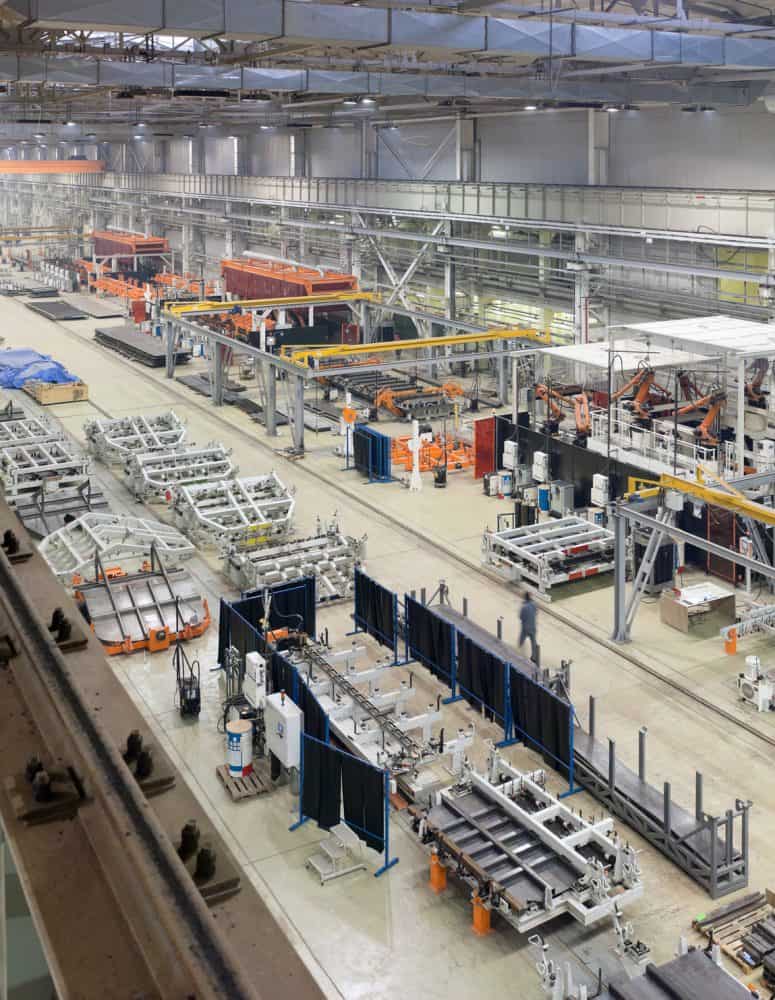
Building Community Partnerships
View the Resource Guide
DOWNLOAD PDFSecond Chance Hiring Resource Guide
This guide is designed to give manufacturers the tools needed to explore and implement Second Chance hiring. This resource explores how to incorporate Second Chance hiring into your talent acquisition strategy by developing partnerships with reentry and workforce organizations supporting people returning from incarceration.
Table of Contents
I Identifying and Assessing Prospective Community Partners
II Ways to Engage Community Partners
III Building Training Partnerships
IV Case Example
.

Identifying Prospective Community Partners
In every community across the country there are nonprofit and public sector organizations helping people with past convictions reintegrate into the workforce. These organizations support hundreds of thousands of prospective employees each year to prepare for the workforce, access jobs, and maintain stable employment over the long-term. Working with a community partner can help ensure candidates are prepared for the expectations and routines of work before rejoining the labor force. Candidates often self-select into these programs, demonstrating their interest and commitment to getting back to work.
Community organizations can help pre-assess candidates based on a company’s individual needs and constraints and establish more efficient application and interview processes. Some community partners provide upfront incentives to candidates such as transportation stipends or ongoing training/certifications to help them successfully transition into new jobs. Many organizations also provide ongoing retention supports to encourage candidates to stay and advance within the company — and support both the employee and employer if challenges arise. MI’s community partnerships scorecard is designed to help manufacturers seek out the right qualifications in a partner such as effective work readiness programming, comprehensive employer partnerships, and ongoing retention supports.
.

Ways to Engage Community Partners
While most partners focus on referring candidates for direct hire, there are several models to consider, including Second Chance staffing agencies and Transitional Employment organizations that contract with employers and provide services like supervision, transportation, and on-the-job training.
Examples of these include:
- Direct Hire Partnerships
- Example: Center for Community Transitions (Charlotte)
- Partnership Model:
- Recruit from client base to identify prospective candidates
- Facilitate training and essential skill development workshops
- Conduct assessment to determine work readiness
- Collaborate with employer
- Partnership Model:
- Example: Center for Community Transitions (Charlotte)
- Transitional Jobs
- Example: Center for Employment Opportunities (National)
- Partnership Model
- Provide supervised, crew-based staffing services to companies
- Provide job coaching and full-time placement supports
- Collaborate with employers to hire participants off the transitional crews where interests and aptitudes align
- Partnership Model
- Example: Center for Employment Opportunities (National)
- Staffing Agencies
- Example: First Step Staffing (Atlanta, Philadelphia, Nashville, California)
- Partnership Model
- Recruit and identify quality candidates for the job
- Send pool of qualified candidates to companies
- Serve as employer of record
- Work with hiring teams to ensure effective onboarding and readiness
- Partnership Model
- Example: First Step Staffing (Atlanta, Philadelphia, Nashville, California)
85% of HR professionals believe that workers with criminal records perform their jobs as well or better than their peers”
-SHRM Getting Talent Back to Work Report, 2021
.

Building Training Partnerships
Certifications, credentials, and specific industry training are important measures of essential workplace functions and are a reliable predictor of workplace success. Many training programs for justice-involved individuals are developed and managed by community organizations, public sector agencies, and professional associations.
Best practice training partnerships typically include:
- Designed in partnership with employers and industry to ensure relevant skills that prepare candidates for high demand roles
- Led by an organization with extensive experience and knowledge working with other employers in comparable industries
- Have a demonstrated track record in increasing retention and advancement
By building strong training partnerships, companies can ensure justice-involved individuals pick up recognized and measured job skills that can be taken into the job market regardless of the geographic region. Strong partnerships also provide a stable workforce, and maximizes industry operations through a well trained workforce.
.

Case Example: Northland Manufacturing, Buffalo
Northland Manufacturing is a machine shop within Northland Workforce Training Center (NWTC) offering contract manufacturing services, while providing students – including candidates with past convictions – with real work experiences aligned with their education and training at NWTC.
Manufacturers partner with Northland on machining projects while contributing to the development of the talent pipeline for the advanced manufacturing sector.
Revenue generated by Northland Manufacturing supports NWTC’s other workforce readiness programs, including career coaching, job placement, transportation assistance, retention supports and low-cost healthcare and childcare.


